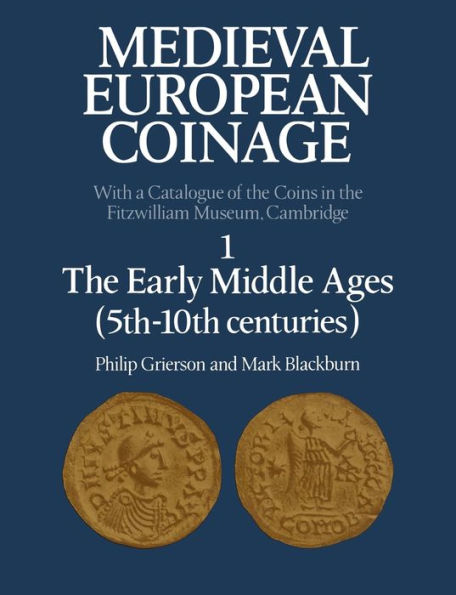Medieval European Coinage: Volume 1, The Early Middle Ages (5th-10th Centuries)
This, the first volume of Medieval European Coinage, surveys the coinage of Western Europe from the fall of the Roman Empire in the West in the fifth century to the emergence of recognizable 'national' political units in the tenth. It starts with the Vandals, Visigoths, Burgundians and other Germanic invaders of the Empire, whose coins were modelled on contemporary issues of the Western or Eastern emperors. The coinage of the Franks is followed from early Merovingian times through to the establishment and subsequent fragmentation of the Carolingian empire. Italy is represented by the coinages of the Ostrogoths, Lombards, Carolingians and popes down to the Ottoman conquest in the mid-tenth century. The coinage of the Anglo-Saxons is traced from the introduction of minting in the early seventh century to the emergence of a united kingdom during the first half of the tenth century, including the aberrant coinages of Northumbria and the Anglo-Viking coinages of the Danelaw.
"1111975756"
Medieval European Coinage: Volume 1, The Early Middle Ages (5th-10th Centuries)
This, the first volume of Medieval European Coinage, surveys the coinage of Western Europe from the fall of the Roman Empire in the West in the fifth century to the emergence of recognizable 'national' political units in the tenth. It starts with the Vandals, Visigoths, Burgundians and other Germanic invaders of the Empire, whose coins were modelled on contemporary issues of the Western or Eastern emperors. The coinage of the Franks is followed from early Merovingian times through to the establishment and subsequent fragmentation of the Carolingian empire. Italy is represented by the coinages of the Ostrogoths, Lombards, Carolingians and popes down to the Ottoman conquest in the mid-tenth century. The coinage of the Anglo-Saxons is traced from the introduction of minting in the early seventh century to the emergence of a united kingdom during the first half of the tenth century, including the aberrant coinages of Northumbria and the Anglo-Viking coinages of the Danelaw.
146.0
In Stock
5
1

Medieval European Coinage: Volume 1, The Early Middle Ages (5th-10th Centuries)
704
Medieval European Coinage: Volume 1, The Early Middle Ages (5th-10th Centuries)
704Paperback(Revised ed.)
$146.00
146.0
In Stock

Product Details
| ISBN-13: | 9780521031776 |
|---|---|
| Publisher: | Cambridge University Press |
| Publication date: | 07/02/2007 |
| Series: | Medieval European Coinage , #1 |
| Edition description: | Revised ed. |
| Pages: | 704 |
| Product dimensions: | 7.40(w) x 9.65(h) x 1.54(d) |
From the B&N Reads Blog
